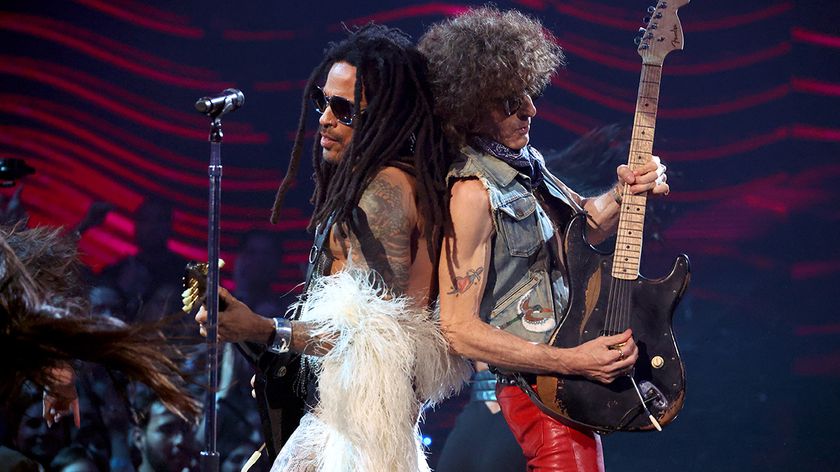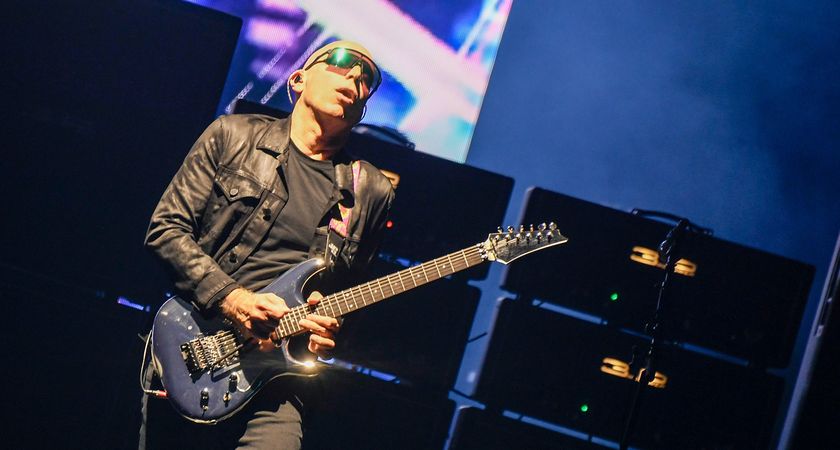Slash: Appetite For Reconstruction
Originally published in Guitar World, May 2010
The new Gibson Appetite Les Paul and Marshall AFD100 head bring Slash’s classic gear back to life.
There's this huge fascination with Appetite for Destruction that just seems to build as the years go on,” Slash says, with a hint of amazement in his voice. “It’s really pretty incredible how deep into every element of that record people are willing to go.”
More than two decades after its release, the events surrounding the writing and recording of Guns N’ Roses’ seminal 1987 full-length debut have for the most part been exhaustively dissected and documented. Though there continues to be extensive scrutiny focused on what is perhaps the album’s most defining musical characteristic: Slash’s guitar tone. Though he is regarded as the quintessential Les-Paul-through-Marshall man of the past quarter century, it has come to light over time that Slash’s primary guitar for the Appetite sessions was actually a copy of a 1959 Les Paul Standard (with some elements of a 1958) built by the late L.A.-based luthier Kris Derrig. At the time, Gibson did not offer a ’59 reissue, so Slash made use of this highly accurate recreation, which quickly became his number-one guitar. And although his main amplifier was a Marshall, it was hardly stock; rather, it was a rented head that had been modded from its factory specs, and whose whereabouts are presently unknown.
Despite the somewhat mutt-like origins of his Appetite gear, the resulting sound that Slash achieved on the album—gritty and almost perilously trebly, but with warmth and overtones to spare—is legendary, and one that hard rock players have been in hot pursuit to recreate ever since. With the imminent release of the new Gibson Slash 2010 Appetite Les Paul and the Marshall AFD100 head, developed by the respective companies in conjunction with Slash, budding guitarists will be able to come closer than ever before to replicating his classic tone.
The Appetite Les Paul, Slash says, “is basically like a ’59 reissue, but with a cool, ‘collector’-type element.” Features include a 1958-style neck profi le, much like that found on Slash’s original guitar, and a body based on a 1959 Les Paul. The highly figured top sports a rich butterscotch “un-burst” finish that replicates how the sunburst finish on original Les Paul Standards fades over time, losing much of its reddish hue in the process. Two unique touches are Slash-selected capacitors that are exclusive to the Appetite guitar, as well as the inclusion of brand-new Seymour Duncan Alnico II Pro Slash signature pickups, which recreate the hot tone—and very cool-looking “zebra” color scheme—of the Eighties-era Duncan pickups found in Slash’s original example.
The Appetite Les Paul is scheduled for release in April in both Gibson Custom and USA models; guitars in the Custom Series will be offered in aged (signed and unsigned) and VOS versions. An additional Epiphone model is slated for release in August of this year.
Get The Pick Newsletter
All the latest guitar news, interviews, lessons, reviews, deals and more, direct to your inbox!
Slash’s primary amplifier on Appetite for Destruction is a piece of gear particularly shrouded in mystery—a rental from SIR that had been modded to include an extra gain stage. The guitarist was so enamored with the Marshall’s souped-up sound that, rather than return the amp after the Appetite sessions, he reported it stolen. It was a slick move, and it might have worked, but soon afterward, Guns N’ Roses booked pre-tour rehearsals at SIR and a roadie accidentally brought the amp to the sessions. The company promptly retrieved its property.
Over the years Slash has referred to this mystery Marshall, which has since disappeared, as a JCM800. Others, through research and talks with people involved with Guns N’ Roses at the time, have identified the amp as either a Model 1959 Super Lead or a 1959T Tremolo. According to Paul Marshall, artist and customer liaison manager at Marshall Amplification, “based on some of our investigations, as well as taking into account what amps Marshall was shipping to America at the time, it is likely that the amp in question was in fact a pre-JCM800 2203 model.” This, he says, would also explain why Slash assumed it to be an actual 800.
“But regardless of whether it was a 1959 or a 2203,” Marshall continues, “the mod that was done basically turned the amp into what could be considered a hot-rodded JCM800.”
Furthermore, Marshall stresses that the new amplifier is in no way meant to be a recreation of the modded SIR model but rather a unit that will present Slash’s storied Appetite tone. “We’re not trying to capture an amplifier,” Marshall says, “we’re trying to capture a sound.”
As it has proved impossible to examine the source amplifier in designing the AFD100, Marshall has instead been scrutinizing every aspect of Slash’s tone as heard on Appetite for Destruction. For his part, Slash even provided the company with some of his isolated guitar tracks from the AFD sessions. “We actually got my original guitar parts off the masters,” he says. “The main one we used was ‘Nightrain,’ because I think it’s most indicative of my tone back then. And then somebody, I don’t remember who, sent in the stripped-down tracks of ‘Welcome to the Jungle,’ and we just started digging in. I think the most interesting thing about this project is that Marshall is trying to recognize the characteristics of that tone and then match it. So they’re taking all the different components that made up my sound back then and putting them into one item.”
The AFD100 is scheduled for release later this year, though interested parties can track the project online at AFD100.com, where the amp’s development is being documented through news updates, blog postings, photos and videos.
“It’s been a really interesting process,” Marshall says. “And at this time we’re still not set on what the final product will be. We’re considering different features as well as the possibility of issuing some models with a limited-edition, vintage look. Basically whatever Slash and our developers come up with. But nothing is set in stone. The only thing I know for sure is that we’re going to nail the tone.”

“The concept of the guitar duel at the end was just appalling”: Crossroads is an essential piece of '80s guitar lore, but not every guitar legend was a fan of the film

“Zal is really nobody’s guitar hero. Fans say he’s the most underrated player ever; many guitarists rate him amongst the best... but I’ve never heard anyone call him their ‘guitar hero’”: Billy Rankin on lessons learned from the legendary Zal Cleminson









